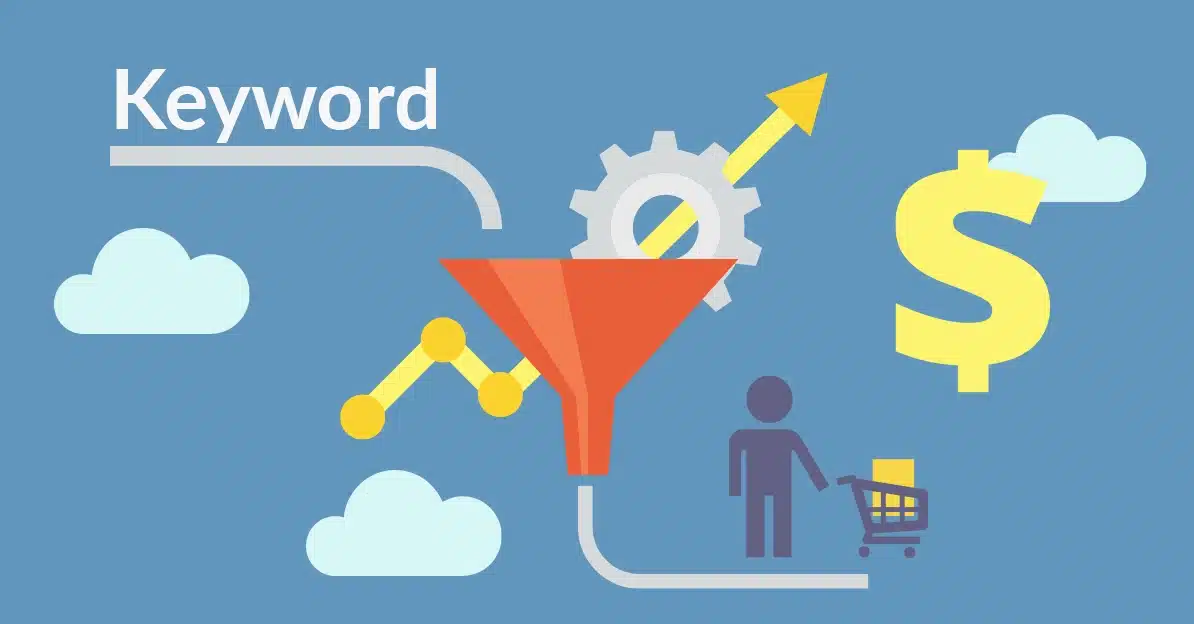Keyword Funnel: Stages, Strategies & Conversion Tips
Introduction
In today’s digital age, search engine optimization (SEO) has become an essential aspect of digital marketing. One of the key components of a successful SEO strategy is a keyword funnel. A keyword funnel is a systematic process of identifying, analyzing, and targeting specific keywords that potential customers use to find products or services related to your business. In this article, we will discuss the importance of a keyword funnel for SEO and digital marketing, the steps involved in building a keyword funnel, and the tools and resources available to help you create an effective keyword funnel.
What is a Keyword Funnel?
A keyword funnel is a process that involves identifying and analyzing keywords relevant to your business, creating optimized content to target those keywords, and converting the website visitors into leads or customers. The purpose of a keyword funnel is to attract potential customers to your website by providing them with valuable information that satisfies their search intent, and then converting them into customers by using conversion rate optimization (CRO) techniques.
A keyword funnel is essential for SEO and digital marketing because it helps you to understand your target audience better and create content that meets their needs. By using a keyword funnel, you can improve the relevance and quality of your content, increase your website’s visibility on search engines, and attract more qualified leads to your business.
Steps to Building a Keyword Funnel
Step 1: Conduct Keyword Research
The first step in building a keyword funnel is to conduct keyword research. Keyword research involves finding relevant keywords for your business, understanding search volume and competition, and identifying long-tail keywords that are more specific and targeted. To conduct keyword research, you can use tools like Google Keyword Planner, Ahrefs, or SEMrush.
When conducting keyword research, it is essential to understand the search volume and competition for each keyword. Search volume refers to the number of searches a keyword receives, and competition refers to the number of websites competing for that keyword. It is best to target keywords with high search volume and low competition to increase your chances of ranking higher on search engine result pages (SERPs).
Identifying long-tail keywords is also important because they are more specific and targeted. Long-tail keywords have lower search volume but are more likely to attract qualified leads to your business. By targeting long-tail keywords, you can improve the relevance and quality of your content and attract more qualified leads to your website.
Step 2: Analyze Search Intent
The second step in building a keyword funnel is to analyze search intent. Search intent refers to the user’s intent behind their search query. Understanding the user’s intent is crucial because it helps you to identify keywords and phrases that match the user’s intent and create content that satisfies their search intent.
To analyze search intent, you can use tools like Google Search Console or Ahrefs. These tools provide insights into the keywords and phrases that users use to find your website and the content that satisfies their search intent.
Once you have identified the keywords and phrases that match the user’s intent, you can create content that satisfies their search intent. Creating relevant and high-quality content is essential for attracting and retaining potential customers to your website.2 / 2
Step 3: Create Optimized Content
The third step in building a keyword funnel is to create optimized content. Optimized content involves using keywords in your content in a natural and meaningful way, structuring your content to match search intent, and incorporating multimedia elements like images and videos to enhance the user experience.
To create optimized content, you can use tools like Yoast SEO or SEMrush. These tools provide insights into the keyword density, readability, and overall quality of your content. By optimizing your content, you can improve your website’s visibility on search engines, attract more qualified leads to your business, and provide a better user experience to your website visitors.
Step 4: Implement Conversion Rate Optimization Techniques
Once you have created optimized content that matches search intent, it’s time to focus on converting your visitors into customers. This is where conversion rate optimization (CRO) comes in. CRO involves improving the user experience on your website and making it easier for users to take the desired action, whether it’s making a purchase, filling out a form, or subscribing to your newsletter.
One important aspect of CRO is creating clear and compelling calls to action (CTAs) that encourage users to take action. CTAs should be prominently displayed on your website, and they should use language that is specific and action-oriented. For example, instead of using a generic CTA like “Submit,” you could use a more specific CTA like “Get Your Free Quote Now.”
Another key aspect of CRO is creating landing pages that are optimized for conversion. Landing pages are standalone pages that are designed to capture leads or drive sales. They should be focused on a single offer or product, and they should have a clear and compelling headline, a strong value proposition, and a prominent CTA.
A/B testing is another important technique for refining your keyword funnel and improving your conversion rates. A/B testing involves creating two versions of a page or element on your website and testing them against each other to see which one performs better. This can help you identify which elements of your funnel are working well and which ones need improvement.
There are many tools available for conducting CRO, including heat mapping tools that show you where users are clicking on your website, A/B testing tools that allow you to test different versions of your pages, and analytics tools that help you track your website’s performance over time.
Step 5: Measure and Refine Your Keyword Funnel
Once you have implemented CRO techniques, it’s important to measure the success of your keyword funnel and make adjustments as needed. This involves tracking your website traffic and engagement metrics, using analytics tools to measure the success of your funnel, and making adjustments based on your performance data.
Some key metrics to track include:
- Traffic: How many visitors are coming to your website?
- Engagement: How long are visitors staying on your website, and how many pages are they visiting?
- Conversions: How many visitors are taking the desired action on your website, such as making a purchase or filling out a form?
- Bounce rate: What percentage of visitors are leaving your website after viewing only one page?
By tracking these metrics over time, you can identify areas of your funnel that are working well and areas that need improvement. You can then make adjustments to your funnel based on your performance data, such as tweaking your CTAs, testing different landing page designs, or targeting different keywords.
Tools for measuring and refining your keyword funnel include website analytics tools like Google Analytics, as well as A/B testing tools and heat mapping tools.
Keyword Funnel Examples
To get a better sense of how keyword funnels work in practice, let’s look at some examples of successful keyword funnels across different industries.
Example 1: E-commerce
An e-commerce company might use a keyword funnel to drive sales of a particular product or category. The funnel might look something like this:
- Conduct keyword research to identify relevant keywords and long-tail keywords related to the product or category. For example, a company selling fitness equipment might target keywords like “dumbbells”, “treadmills”, and “exercise bikes”.
- Analyze search intent to understand what users are looking for when they search for these keywords. Are they looking for product reviews, comparison guides, or buying guides? By understanding the user’s intent, the company can create content that matches their needs and drives conversions.
- Create optimized content that matches search intent and incorporates the targeted keywords. This might include product descriptions, buying guides, or video tutorials.
- Use CRO techniques to create a landing page that is optimized for conversion, with a clear and compelling headline, a strong value proposition, and a prominent CTA. The page should be designed to encourage users to take action, whether that’s making a purchase or signing up for a newsletter.
- Measure the success of the funnel using website analytics. By tracking key metrics like traffic, bounce rate, and conversion rate, the company can identify areas for improvement and refine their funnel over time.
Key takeaways and lessons learned from these examples
The key takeaway from this example is the importance of understanding the user’s intent and creating content that meets their needs. By conducting thorough keyword research and analyzing search intent, the company can create a keyword funnel that drives targeted traffic and generates conversions.
Tools and Resources for Building a Keyword Funnel
To create a successful keyword funnel, you’ll need to equip yourself with the right tools and resources. The following tools can help you build an effective keyword funnel:
- Keyword research tools: These tools are essential for finding the right keywords for your business. They can help you identify relevant keywords, estimate their search volume and competition, and find new keyword opportunities. Some popular keyword research tools include Google Keyword Planner, Ahrefs, and SEMrush.
- Search intent analysis tools: Understanding the user’s intent behind their search query is crucial for creating content that satisfies their needs. Search intent analysis tools can help you understand what users are looking for and create content that matches their intent. Some popular search intent analysis tools include Google Search Console, Google Trends, and AnswerThePublic.
- Content optimization tools: To rank higher in search engines, your content needs to be optimized for both search engines and user experience. Content optimization tools can help you optimize your content by analyzing your content’s readability, grammar, and structure. Some popular content optimization tools include Yoast SEO, Grammarly, and Hemingway Editor.
- Conversion rate optimization tools: Once you’ve attracted visitors to your website, you need to convert them into customers. Conversion rate optimization tools can help you optimize your landing pages, forms, and calls to action to maximize conversions. Some popular conversion rate optimization tools include Unbounce, Optimizely, and Crazy Egg.
By using these tools, you can streamline your keyword funnel building process and create a more effective and optimized keyword funnel for your business.
Conclusion
In conclusion, a keyword funnel is an essential component of any SEO and digital marketing strategy. By identifying relevant keywords, analyzing search intent, creating optimized content, and implementing conversion rate optimization techniques, you can drive targeted traffic to your website and generate conversions. With the right tools and resources, building a keyword funnel is easier than ever. So why not start building yours today?







